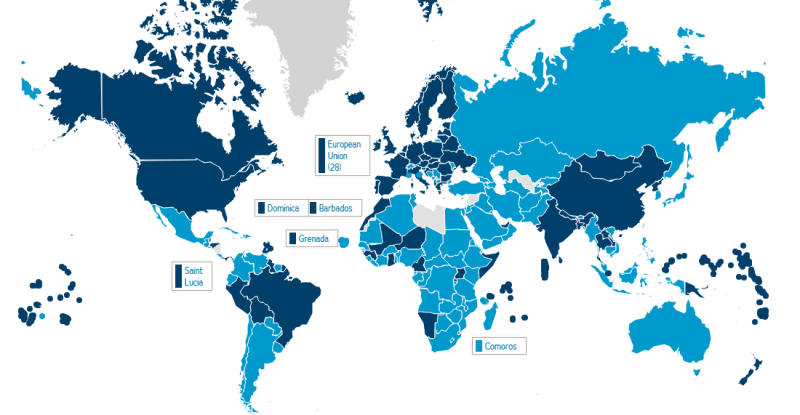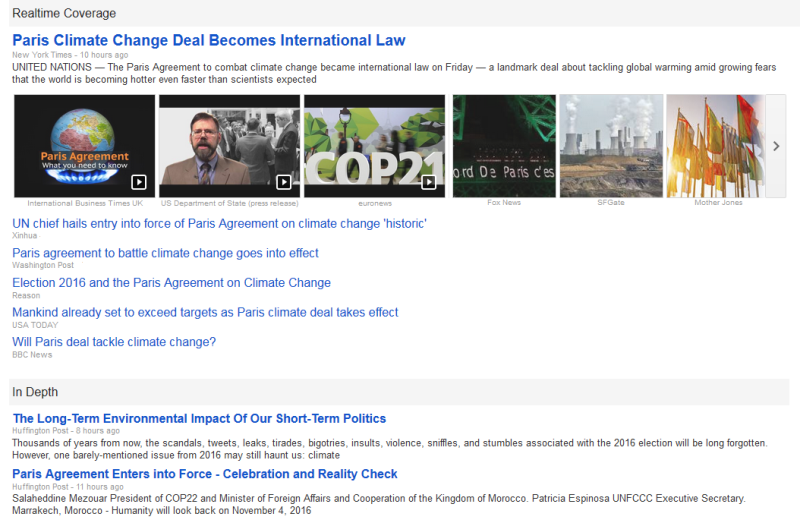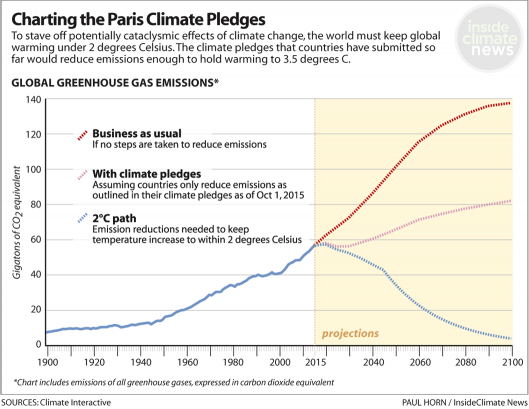Intended Nationally Determined Contributions
Intended Nationally Intended Contributions
What Is a Climate Plan INDC?
🌎
Visit GreenPolicy360's "Climate Plans Enforcement"
- "Turning National Climate Pledges & Promises into Reality"
GreenPolicy2021 initiative for Legally Enforcing National Climate Plans
- "Climate Plans Enforcement" (2021-2023)
- "Turning National Climate Pledges & Promises into Reality"
GreenPolicy360:
Now is the time to go beyond "intended" climate plans actions. Intended NDCs and now the newly submitted NDCs must become measurable and powerful reality.
GreenPolicy360 is aimed at 'turning promises into reality' with our Climate Plans Enforcement project. We ask how best can governments and business, communities and all of us act to accelerate national climate action promises that came out of the international Summits in Paris (2015) and Glasgow (2021). How can we gain momentum and speed to scale up climate solutions to deal with the great challenge of our times... We believe identifying and sharing 'green best practices', those climate solutions that work best, and can be multiplied across communities and nations with their multiple governance systems, is one of the most practical ways to get to work making a positive difference.
Climate plans enforcement, laws and rules, engineering and smart design, measuring and monitoring emissions and dealing with 'hot spots' all have a place today, right now, in the tool kits of the nations of the world.
Pressuring Nations to Step Up, Cooperate, and Act Now
- Nationally Determined Contributions (NDC) Tracking
- Measuring and Monitoring Climate Plans & Climate Actions
- 'Talking the Talk and Walking the Walk'
GreenPolicy360: The INDC as 'intended' national climate action plans submitted in 2015 at the global climate summit in Paris formed a basis of cooperative international action. The intentions of countries are one thing, action is another. Words must produce results. The intended national determined contributions (INDCs) will become NDCs at the global summit in Glasgow, yet NDCs need to be enforced. It is time for legal actions, and online sharing of successful legal practices.... We call this type of multiplier based on models and templates that are open access and 'shareable' an extension of our multi-decade focus on #GreenBestPractices, where we act to turn ripples of action into waves of results.
The Wave: Climate Litigation and Climate Justice
by Isabella Kaminski
'The Wave is a newsletter about climate litigation and climate justice. It covers lawsuits that seek to further climate action or delay it around the world, profiles the people who bring them, analyses litigation trends, and examines their impacts and limitations.
(Supported by the Foundation for International Law for the Environment)
2023 -- Watershed year for climate litigation
Over the past twelve months, courts from Indonesia to Australia have made ground-breaking rulings that blocked polluting power plants and denounced the human rights violations of the climate crisis. But this year could be even more important, with hearings and judgments across the world poised to throw light on the worst perpetrators, give victims a voice and force recalcitrant governments and companies into action...
Upcoming legal cases/lawsuits and actions include:
Children's Trust case to go to trial in Montana.
Over two weeks in June, the Children's Trust will argue that the US state is failing to protect their constitutional rights, including the right to a healthy and clean environment, by supporting an energy system driven by fossil fuels. They will also say climate change is degrading vital resources such as rivers, lakes, fish and wildlife which are held in trust for the public.
“Never before has a climate change trial of this magnitude happened,” says Andrea Rodgers, senior litigation attorney with Our Children’s Trust, which is behind the case. “The court will be deciding the constitutionality of an energy policy that promotes fossil fuels, as well as a state law that allows agencies to ignore the impacts of climate change in their decision making.”
(Andrea Rogers says) the watershed trial would be watched around the world and “is set to influence the trajectory of climate change litigation going forward”.
~ Current Status:
~ The plaintiffs and their attorneys are continuing to gather evidence and prepare for trial. This historic trial - the first children’s climate trial in U.S. history - will begin on Monday, June 12, 2023, at the First Judicial District Court in Helena, Montana, and will conclude Friday, June 23, 2023.
🌎
2022 was a big year for climate action in the courts
The past year saw major developments in accountability cases against oil companies and national governments around the world, as well as setbacks for several high-profile fossil fuel projects.
It was another busy year in the courts for climate-related cases. From challenges to fossil fuel and petrochemical expansion to climate lawsuits against Big Oil and national governments, there were notable victories for climate action and accountability in 2022. There were also some setbacks, for instance, the U.S. Supreme Court’s limitation of the U.S. EPA’s authority to regulate greenhouse gas emissions. Here are some of the highlights.
Read the Complete article by Dana Drugmand at DeSmog, Dec. 29, 2022)
🌎
Boost climate action or we'll see you court, activists tell governments
September 2022
Paris (AFP) – Governments around the world must scale up climate action "or face further legal action", an open letter from campaign groups warned Tuesday, as battles over policies to cut emissions and protect the environment are increasingly fought in the courts.
From legal efforts to steer governments to do more to curb fossil fuel pollution, to court action over companies' misleading green claims, the number, scope and ambitions of climate litigation is expanding, say experts, with an increasing number of cases are being launched against governments...
Research from the Grantham Research Institute at the London School of Economics this year has found that of the 2,000 or so climate legal cases filed since 1986, almost a quarter were started since the beginning of 2020.
🌎
The climate trials of the 21st century have begun
We now have underway the first climate trials (or various stages of them) of the 21st century. The overall question in these trials is actually straightforward: Do governments and corporations have an obligation to protect the habitability of the Earth’s climate for human populations?
Let’s start with government. The first trial (in the United States) was not actually that recent. In 1999 a group of environmental organizations petitioned the U.S. Environmental Protection Agency (EPA) to regulate greenhouse gases. In 2003 the EPA denied the petition. Several states then joined a legal appeal which reached the U.S. Supreme Court. The court decided in 2007 that, in fact, the EPA did have the authority and the obligation to consider seriously how to regulate greenhouse gases.
The agency then offered a regulation plan which was challenged in court. In 2014 the Supreme Court found the EPA plan acceptable with a few minor tweaks.
This kind of legal battle is really a plain vanilla regulatory fight about what a particular government agency can and should do under existing laws. But a more sweeping type of legal battle is now unfolding, one that invokes a much broader obligation of the government to make the climate safe for future generations.
In Washington state a group of young people between the ages of 12 and 16 sued the state to force it to implement a greenhouse gas emissions reduction plan. The state has since come up with a plan that the attorneys for the children say is inadequate. They are in court once again.
Washington isn’t the only state feeling the judicial heat. A group called Our Children’s Trust is pursuing legal action in several states (including the case cited above) and in federal court. The federal case is proceeding to trial after the government failed to get it dismissed. The aim of the federal plaintiffs is to seek broader protection in policies across the government, not in just one agency...
Some 80 of these cases have been filed against national or subnational governments since 2005, the research found, with a record number of 30 new cases submitted in 2021.
🌎
2021: Google Earth Can Track Climate Changes
GreenPolicy360: For over 5 decades, beginning with visionary earth science from space missions in 1960s and 70s, the possibilities for tracking, measuring and monitoring earth's systems have exponentially improved. Today, as we enter the 2020s, many new and critically essential earth imaging, earth observation, and atmospheric science tools, combined with decades of data, baselines and trendlines, dynamic changes, are now usable by scientists in ways the visionaries (such as George Brown) hoped would be gathered and become scientific reality. Applications (APIs in current nomenclature) have, at a crucial moment in history, become available for the nations of the world. We, at GreenPolicy360, continue our decades of work on this green, environmental and political front. Our hope is soon to launch a new project, an open-source, easily accessible database of climate-related green best practices, a go-to hub of nationally determined plans, pledges and promises being advanced to deal with climate change. We believe, as stated since our start up, that sharing green best practices, i.e., turning ripples into waves in a physics of peace and positive change, is an effective strategy in our common era when positive change is demanded. #ClimateCrisis #GreenPolicy360 #StrategicDemands
Intended and Nationally Determined Climate Goals
Nationally Determined Contributions (NDC) Tracking
Measuring and Monitoring Climate Plans & Climate Actions
'Talking the Talk and/or Walking the Walk'
Countries with Largest CO2 Emissions
2020 National Climate Commitments
○
Climate Change Performance Index
Published annually since 2005, the Climate Change Performance Index (CCPI) is an independent monitoring tool for tracking countries’ climate protection performance. It aims to enhance transparency in international climate politics and enables comparison of climate protection efforts and progress made by individual countries.
The implementation phase of the Paris Agreement enters a crucial phase in 2020, where countries are due to submit their updated Nationally Determined Contributions (NDCs). In light of this, the CCPI aims to inform the process of raising climate ambition. As a long-standing and reliable tool for identifying leaders and laggards in climate protection, the CCPI can be a powerful instrument to hold governments accountable for their responsibility to act on the climate crisis – and of stimulating a race to the top in climate action.
News on the #ClimateCrisis: States / Regions Plan and Act
Report via The Climate Group
○
2019
On the Brink
"We are on perilous ground"
https://news.un.org/en/story/2019/11/1052171 https://www.unenvironment.org/resources/emissions-gap-report-2019
The annual Emissions Gap Report, which compares where greenhouse gas emissions are heading, versus where they need to be, shows that emissions need to fall by 7.6 per cent each year over the next decade, if the world is to get back on track towards the goal of limiting temperature rises to close to 1.5 degrees Celsius.
Only 2 countries are meeting their climate pledges
Via World Resources Institute
Tracking Climate Crisis Response in Key Sectors
Six milestones—in energy, transport, land use, industry, infrastructure, and finance—that would need to be met by 2020 to bend the curve in global greenhouse gas emissions and put the world on a pathway consistent with the 2015 international climate Agreement.
• https://www.weforum.org/agenda/2018/12/ten-charts-show-how-the-world-is-progressing-on-clean-energy
···························································
Countries highest in C02 emissions
Nov 2018 /Policies of China, Russia and Canada threaten 5C climate change, study finds
Listing of Countries / Mapping Progress toward INDC Goals
Paris Climate Agreement 'Equity Check'
Climate Pledges / Equity mapping
Global Warming / Pledges mapping
○
2018
························
Climate Change Laws Around the World
Trends in Climate Change Legislation
Paris Climate Agreement Tracker / CAIT Climate Data Explorer
ClimateWatch
- Click on the Map for the Latest Country-by-Country News
CO₂ and other Greenhouse Gas Emissions / Via Our World in Data
• https://ourworldindata.org/co2-and-other-greenhouse-gas-emissions
○
- Turning Intended Nationally Determined Contributions (INDCs) into Nationally Determined Contributions (NDCs)
- Time to Move to Specific Goals and Action Agendas, Nation-by-Nation, Cooperatively and Powerfully
···························································································
2017: US Administration Steps Away from #ParisAgreement, G-19/EU Pledges with International Community to Move Forward
"World Aligns Against Trump"
https://www.greenpolicy360.net/w/File:G-20_19%2B1.png
○
On the Trump Exit from the Global Climate Agreement
The United States Exit / June 1, 2017
The US will be judged, this day will be long remembered
National Security & Global Security are interrelated. He doesn't know this. There's so much he doesn't know & so much he doesn't know that he doesn't know.
Trump just betrayed the world. Now the world will fight back
Brown: The Rest of the World Is Against Trump / Governor Brown Statement on White House Paris Climate Agreement Announcement
- “This current departure from reality in Washington will be very short-lived, that I promise you,” Brown told POLITICO in an interview. “I’ve spoken with Republicans here in the Legislature, and they’re beginning to get very serious about climate action, so the momentum is all the other way. And I think Trump, paradoxically, is giving climate denial such a bad name that he’s actually building the very movement that he is [purporting] to undermine...”
○
October 2016: European Union votes to Affirm the #ParisAgreement
- The most comprehensive international agreement ever to combat man-made climate change will take effect in November, less than a year after negotiators from more than 190 countries reached international accord.
- October 5, 2016 / The European Parliament yesterday approved ratification of the Paris climate accord by the European Union (EU).
- United Nations Secretary-General Ban Ki-moon: "There are two requirements for the Paris Agreement to enter into force. Fifty-five parties to the Agreement, and fifty-five percent of greenhouse gas emissions accounted for... With the action taken by the EU Parliament, we will achieve both thresholds."
○ ○ ○ ○ ○ ○ ○ ○ ○ ○ ○ ○ ○ ○ ○ ○
Climate Action Headline News
○ ○ ○ ○ ○ ○ ○ ○ ○ ○ ○ ○ ○ ○ ○ ○
Earth Day / Countries Signing Climate Action Plans
○ ○ ○ ○ ○ ○ ○ ○ ○ ○ ○ ○ ○ ○ ○ ○ ○
How the World Has Changed Since the Paris Agreement on Global Warming
- A list of progress and failures in the wake of the historic agreement to combat climate change
○ ○ ○ ○ ○ ○ ○ ○ ○ ○ ○ ○ ○ ○ ○ ○ ○
Individual Nation's Climate Plans
INDC portal -- http://unfccc.int/focus/indc_portal/items/8766.php
Social Media Info ---- #INDCs ---- #UNFCCC
○ ○ ○ ○ ○ ○ ○ ○ ○ ○ ○ ○ ○ ○ ○ ○ ○ ○
GreenPolicy's INDC Global List & Updates on Individual Country Climate Action Plans
Nationally determined INDCs | resilient | renewable | clean energy | climate plans
195 countries signed onto the new international climate agreement at COP21 in Paris.
Does that mean the Agreement is now in effect?
No, countries still need to take steps so that it takes effect. What occurred on December 12 at COP21 was the “adoption” of the Paris Agreement by the Conference of the Parties (COP) to the UN Framework Convention on Climate Change (UNFCCC). Adoption is the formal act that establishes the form and content of an agreement.
In addition to adopting the Paris Agreement, the Parties made a number of key decisions about what’s necessary for the Agreement to enter into force. They also agreed on a process for how countries will finalize their current national climate plans and shift from being Intended Nationally Determined Contributions (INDCs) into Nationally Determined Contributions (NDCs).
Countries must now actually join the Paris Agreement and become Parties to it. To do this, each country must now sign and indicate their consent to be bound by the Agreement.
After at least 55 Parties to the UNFCCC representing at least 55 percent of total global greenhouse gases sign on and indicate their consent to be bound will the Agreement “enter into force,” meaning it will come into effect and be legally binding.
After entry into force, the first meeting of the Parties to the Paris Agreement will be held. This will be an important time to adopt many of the more detailed rules and procedures necessary to make the Agreement effective.
What’s the timeline for countries to ratify the Agreement?
On April 22, 2016, all Heads of State can sign the Agreement at a high-level signing ceremony at the United Nations in New York.
The Agreement will then be open for signature for one year, until April 21, 2017.
Most countries will sign the Agreement “subject to ratification, acceptance and approval,” making their signature conditional on obtaining the required domestic approval for joining the Agreement. In some cases, they will also enact any national legislation necessary to implement the Agreement. For example, in Australia, the only requirement is formal notification and introduction of the Agreement in Parliament, whereas in Mexico, the consent of the Senate is also required. In the United States, many international agreements are joined as “executive agreements” based on presidential authority.
○ ○ ○ ○ ○ ○ ○ ○ ○ ○ ○ ○ ○ ○ ○ ○ ○ ○ ○ ○ ○ ○ ○ ○ ○ ○ ○ ○ ○ ○ ○ ○ ○ ○ ○ ○ ○ ○
Friends of GreenPolicy360 -- Reporting on the International Plans
CLIMATE ACTION TRACKER
○ ○ ○ ○ ○ ○ ○ ○ ○ ○ ○ ○ ○ ○ ○
CLIMATE CHANGE NEWS
Paris tracker: Who pledged what for 2015 UN climate pact?
INDC FACTSHEETS
Comprehensive overview of submitted INDCs with quantification where possible
In cooperation with the PRIMAP group at Potsdam Institute for Climate Impact Research.
○ ○ ○ ○ ○ ○ ○ ○ ○ ○ ○ ○ ○ ○ ○
COMPARISON OF INDCS
Via the Center for Climate and Energy Solutions
○ ○ ○ ○ ○ ○ ○ ○ ○ ○ ○ ○ ○ ○ ○
INDC CLIMATE ACTION PLANS
○ ○ ○ ○ ○ ○ ○ ○ ○ ○ ○ ○ ○ ○ ○ ○ ○ ○ ○ ○
○ ○ ○ ○ ○ ○ ○ ○ ○ ○ ○ ○ ○ ○ ○ ○ ○ ○ ○ ○ ○ ○ ○ ○
Tracking country climate pledges (INDCs)
Meta analysis of climate INDC plans
World Resources Institute reviews a dozen recent reports that examine how far the world’s climate action commitments (intended nationally determined contributions) will combat global warming...
○ ○ ○ ○ ○ ○ ○ ○ ○ ○ ○ ○
Via Carbon Brief -- http://www.carbonbrief.org/paris-2015-tracking-country-climate-pledges
Progress Reports on Climate Action Plans (INDCs) as Submitted to the UN
○ ○ ○ ○ ○ ○ ○ ○ ○ ○ ○ ○ ○ ○ ○ ○ ○ ○ ○ ○
INDC definitions/process via World Resources Institute
Countries across the globe committed to create a new international climate agreement by the conclusion of the U.N. Framework Convention on Climate Change (UNFCCC) Conference of the Parties (COP21) in Paris in December 2015. In preparation, countries have agreed to publicly outline what post-2020 climate actions they intend to take under a new international agreement, known as their Intended Nationally Determined Contributions (INDCs). The INDCs will largely determine whether the world achieves an ambitious 2015 agreement and is put on a path toward a low-carbon, climate-resilient future.
How does the INDC process work?
The process for INDCs pairs national policy-setting — in which countries determine their contributions in the context of their national priorities, circumstances and capabilities — with a global framework that drives collective action toward a low-carbon, climate-resilient future.
The INDCs can create a constructive feedback loop between national and international decision-making on climate change.
INDCs are the primary means for governments to communicate internationally the steps they will take to address climate change in their own countries. INDCs will reflect each country’s ambition for reducing emissions, taking into account its domestic circumstances and capabilities. Some countries may also address how they’ll adapt to climate change impacts, and what support they need from, or will provide to, other countries to adopt low-carbon pathways and to build climate resilience.
INDC preparations - http://www.ecofys.com/files/files/ecofys-giz-2014-intended-nationally-determined-contributions-under-unfccc.pdf
○
"Debt Swaps?" UN proposal of debt relief for climate adaptation divides aid experts -- UN offer of debt relief for small island states to pay for climate change adaptation merges legitimate and illegitimate debt
○
As of October 8th, 2015, 121 countries have submitted their climate goal plans
As of September 28, 2015, two days before Oct 1st goal for INDC submissions to the Conference/UNFCCC, 88 countries have submitted climate INDC plans, with 108 countries yet to submit and 63 days in which to do so...
○
- Anthropocene
- Atmosphere
- Atmospheric Science
- Biodiversity
- Citizen Science
- Agriculture
- Best Practices
- Carbon Sequestration
- City Governments
- Climate Change
- Climate Policy
- Countries
- Democracy
- Desertification
- Earth Observations
- Earth360
- Earth Science
- Eco-nomics
- Ecological Economics
- Ecology Studies
- Education
- Environmental Full-cost Accounting
- Environmental Protection
- Environmental Security
- Environmental Security, National Security
- Externalities
- Forests
- Global Warming
- Globalization
- Green Energy Initiatives
- Green Best Practices
- Green Climate Fund
- Green Infrastructure
- Green Networking
- Green Politics
- INDC
- Land Ethic
- Maps
- Model Legislation
- Natural Resources
- NASA
- Networking
- New Definitions of National Security
- Oceans
- Ocean Sustainability
- Permaculture
- Planet Citizen
- Rain Forest
- Renewable Energy
- Resilience
- Sea-Level Rise & Mitigation
- Smart Growth
- State
- Strategic Demands
- Sustainability Policies
- United Nations
- United Nations Framework Convention on Climate Change
- Whole Earth










